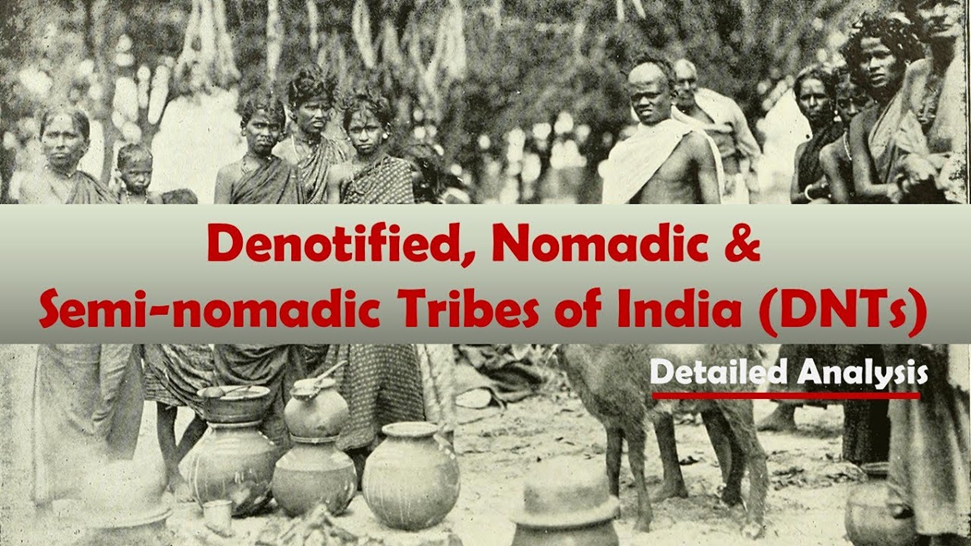Free Courses Sale ends Soon, Get It Now


Free Courses Sale ends Soon, Get It Now



Copyright infringement not intended
Context: To address the challenges and aspirations of the denotified, nomadic and semi-nomadic tribes (DNTs) communities, a three-day national conclave was organized in Hyderabad from May 26 to May 28, 2023.
Details
Themes of discussion
'DNT Voice'
Resolution adopted
Denotified, Nomadic and Semi-Nomadic Tribes (DNTs)
About
History of DNTs
Before Independence
After Independence
Challenges faced by DNTs
Lack of recognition
Lack of representation
Lack of education
Lack of health
Lack of livelihood
Social Justice
Steps Taken by the Government
The denotified, nomadic and semi-nomadic tribes need a holistic and inclusive approach to their development and empowerment. Some of the possible measures are:
Recognition
Education
Health
Livelihood
Social Justice
Way Forward
Conclusion
Must Read Articles:
Denotified, Nomadic, Semi-nomadic (SEED) Tribes: https://www.iasgyan.in/daily-current-affairs/denotified-nomadic-semi-nomadic-tribes
|
PRACTICE QUESTION Q. Consider the following statements 1. Criminal Tribes Act, 1924 was enforced by the British Raj to notify certain communities as criminal tribes. 2. The National Commission for Scheduled Tribes was established to study the developmental aspects of denotified and nomadic or semi-nomadic tribes in India. 3. Uttar Pradesh has the largest number of denotified and nomadic tribes in India. How many of the above statement is/are incorrect? A) Only 1 B) Only 2 C) Only 3 D) All Answer: D Explanation: Statement 1 is incorrect: The Criminal Tribes Act, of 1871 was the first act that notified certain communities as criminal tribes and subjected them to surveillance, registration and restrictions. The act was amended several times and repealed by the Independent Indian Government in 1952. Statement 2 is incorrect: The National Commission for Denotified, Nomadic and Semi-Nomadic Tribes (NCDNSNT) is a national commission set under the Ministry of Social Justice and Empowerment, Government of India, to study various developmental aspects of denotified and nomadic or semi-nomadic tribes in India. Statement 3 is incorrect: Maharashtra has the largest number of denotified and nomadic tribes in India. About five million people are belonging to these communities in Maharashtra. |
© 2024 iasgyan. All right reserved